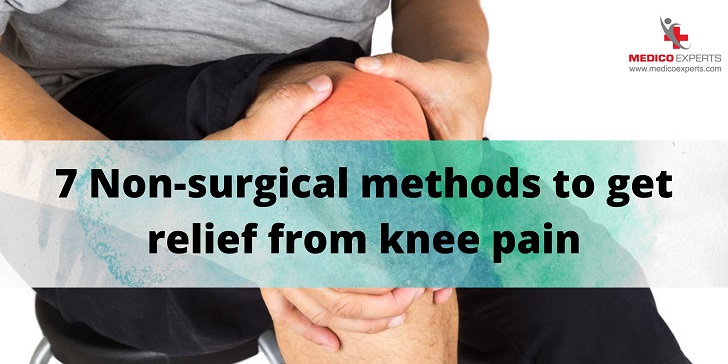Is It Possible to Get Knee Pain Relief Without Surgery?
Yes, non-surgical treatments can help relieve knee pain, even if an orthopedic surgeon has recommended knee replacement surgery.
Knee pain, if left untreated, can limit daily activities, including walking, sports, and other movements that require knee flexibility.
Knee pain typically progresses from mild discomfort to a severe condition where mobility becomes challenging. However, early intervention with non-surgical treatments can prevent the need for knee replacement surgery.
If you are looking for knee pain treatment without surgery, there are several scientifically backed non-invasive methods, such as physiotherapy, lifestyle modifications, and advanced regenerative treatments like stem cell therapy.
Let’s explore seven effective non-surgical treatments for knee pain that can help you maintain mobility and live pain-free.
Non-Surgical Methods for Mild to Moderate Knee Pain
Mild to moderate knee pain can often be managed with lifestyle changes, medications, and physiotherapy.
These methods help alleviate pain caused by conditions such as osteoarthritis, inflammation, or minor injuries.
1. Medications:

Doctors often prescribe pain relievers and anti-inflammatory drugs to manage knee pain caused by arthritis or injuries.
Over-the-counter medications, such as acetaminophen or NSAIDs (nonsteroidal anti-inflammatory drugs), can help relieve mild pain. However, always consult a doctor before taking any medication.
2. Physical Therapy and Massage Therapy:
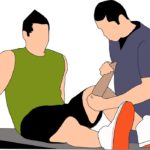
- Physiotherapy helps strengthen the muscles around the knee, improving stability and reducing strain.
- Massage therapy can alleviate muscle spasms and promote better blood circulation to the affected area.
A certified physiotherapist can guide you with specific exercises to improve knee function.
3. Knee Braces and Support Devices:
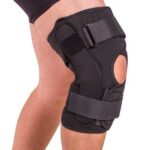
A knee immobilizer brace is used for a short period after an acute injury, such as a complete major ligament or tendon tear or a patellar fracture or dislocation, which can protect the knee. They are beneficial for individuals with ligament injuries or early-stage arthritis.
Using a knee brace along with prescribed analgesics and physiotherapy can accelerate recovery.
4. Injections for Knee Pain Relief:
Several types of injections can help manage knee pain:

- Corticosteroid injections: Corticosteroids can quickly reduce inflammation, relieving pain caused by swelling that presses on nerves or surrounding tissues.
- Hyaluronic acid: Hyaluronic acid is a thick fluid that can be injected into your knee to improve mobility and relieve pain. It’s similar to the fluid that naturally lubricates joints. Although study results on the effectiveness of this treatment have been mixed, relief from one or a series of shots can last up to six months.
- Platelet-rich plasma (PRP): Many different growth factors are concentrated in PRP, which appears to reduce inflammation and promote healing. PRP has shown good results in some studies to help people with osteoarthritis.
5. Home Remedies and Lifestyle Changes:
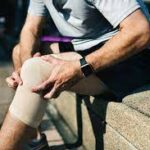
- R.I.C.E.: Rest, Ice, Compression, and Elevation (RICE) is excellent for knee pain caused by a minor injury or an arthritis flare. Rest your knee, apply ice to reduce swelling, cover it with a compressive bandage, and keep it elevated.
- Heat Therapy: Applying a heat pack or a hot water bottle to the painful area on your knee may provide temporary pain relief.
- Exercise: Too much rest can weaken your muscles, causing joint pain to worsen. Choose a safe exercise program for your knees and stick to it. Like cardio exercises, improve flexibility and strengthen the muscles that support your knee. Weightlifting and stretching are also beneficial. Walking, swimming, water aerobics, stationary cycling, and elliptical machines are all good cardio options. Running, jumping, and kickboxing are all jarring exercises to avoid. Avoid exercises that put a lot of strain on your knees, such as lunges and deep squats. These can worsen pain and, if done incorrectly, result in injury.
- Control your weight: Losing weight reduces the stress on your knee if you’re overweight. It’s not even necessary to reach your “ideal” weight. Even small changes make a difference.
6. Acupuncture:
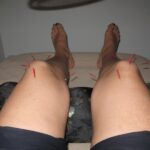
Numerous clinical studies have proven that Acupuncture can relieve osteoarthritis pain, particularly in the knee. Acupuncture releases endogenous opioid endorphins (the body’s natural pain-relieving chemicals).
Acupuncture is a good option to keep in mind if you want to reduce pain, inflammation, and stiffness in your knee while also increasing your range of motion.
Non-Surgical Methods for Severe Knee Pain
Severe knee pain is the stage where doctors recommend total knee replacement surgery. Though knee replacement surgery methods have advanced quite a lot, if you want to avoid the surgery there is a method that exists today.
This method is “Stem cell therapy”
Let’s understand this method in a bit more detail.
7. Stem Cell Therapy for Knee Pain Treatment Without Surgery:

Stem cell therapy is an advanced regenerative treatment that uses the body’s natural healing process to repair damaged tissues in the knee. This procedure involves injecting healthy stem cells into the affected knee, promoting tissue regeneration and reducing pain.
Potential Benefits of Stem Cell Therapy:
✔️ May help in cartilage regeneration
✔️ Can reduce inflammation
✔️ May delay or prevent the need for surgery
✔️ Minimally invasive with no long recovery time
If you are seeking an alternative to total knee replacement, stem cell therapy might be a viable option. However, this therapy is still in the research phase, and consultation with a qualified medical expert is essential before proceeding.
Conclusion
In the early stages of knee pain, manage it effectively with the different methods mentioned above under the guidance of the doctor.
If you are entering the moderate stage, you can avoid entering in severe stage with the timely decision to explore stem cell therapy.
If you are having pains of severe stage and you don’t want to undergo total knee replacement surgery then stem cell therapy is the only option for you.
If you want to know more about stem cell therapy for knee pain click here stem cell therapy for joint pain.
If you have any other questions you may choose to contact us for further details.
Frequently asked questions
Q1. What is the current status of stem cell therapy in knee pain treatment?
Stem cell therapy for knee pain is still in the research phase and has not yet received formal approval from the Indian Council of Medical Research (ICMR). However, bone marrow transplants for blood-related disorders are approved by ICMR.
Q2. Can knee pain be treated permanently without surgery?
In many cases, non-surgical treatments such as physical therapy, injections, acupuncture, and regenerative therapies can effectively manage knee pain. However, the success of these treatments depends on the severity of the condition and individual response to therapy.
Q3. How do I know if stem cell therapy is right for me?
If you are considering stem cell therapy for knee pain, consult an stem cell specialist who can evaluate your condition and determine if you are a suitable candidate.
Medical Disclaimer: The information provided in this article is for educational purposes only and should not be considered medical advice. Always consult a qualified healthcare professional before making any decisions regarding your knee pain treatment.


